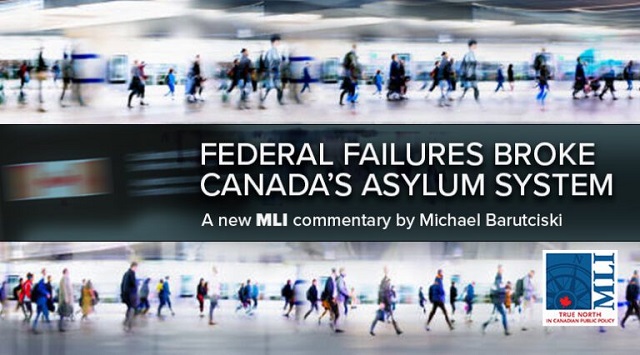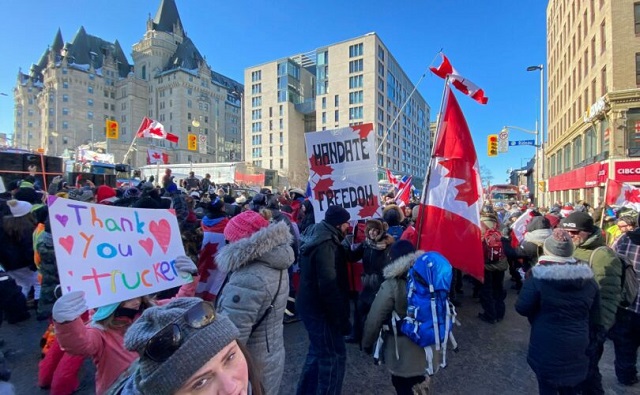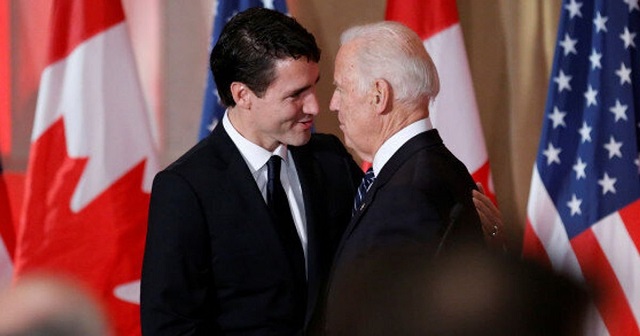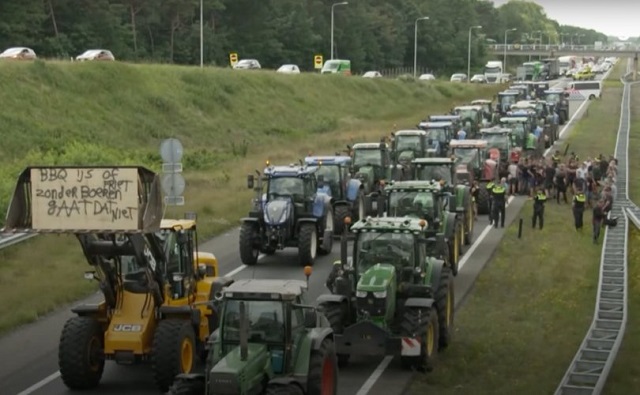National
Asylum seekers spreading from largest cities into the rest of Canada

Federal failures broke Canada’s asylum system
From the MacDonald Laurier Institute
By Michael Barutciski
Our quiet asylum crisis is largely a self-inflicted wound.
Introducing the problem
Recently released statistics indicate over 144,000 migrants claimed asylum in Canada during 2023. This is the highest year on record and is several times higher than any year before the Liberals formed government in 2015. Until a decade ago, Canada was receiving on average less than 25,000 asylum claims per year.
In the days following the publication of the latest numbers Canada’s English-speaking media barely covered this story, despite extensive reporting from Quebec media. Perhaps this is not surprising given that almost half the asylum claims were made in Quebec, prompting premier François Legault to send a formal letter to prime minister Justin Trudeau requesting financial help and measures to stem the flow. However, a comparable number of claims were made in Ontario, which explains why Toronto’s municipal authorities have also been asking for federal money to help with the overwhelmed local services.
Why have there been so many asylum claims in 2023 despite the closing of Roxham Road almost a year ago? After several years of use by asylum seekers, the infamous rural crossing between Quebec and upstate New York was closed. Activists and academics warned that illegal entries along the U.S. land border would increase but this did not happen. Entering illegally was simply not necessary because Ottawa also loosened legal requirements for entry to Canada; the easiest way to eliminate so-called “irregular” migration is to “regularize” it.
The explosion in asylum claims post-Roxham is the result of two simultaneous policy decisions: (1) loosening the criteria for visa issuance and (2) allowing visa-free travel for potential asylum seekers. In other words, our quiet asylum crisis is largely a self-inflicted problem.
The only logical explanation for these striking policy decisions is wide-spread ideological conviction that Canada must be as open as possible. But this conviction is now posing a long-term threat to the asylum system. The country has suffered from a lack of debate and viewpoint diversity that allowed this simplistic ethic to flourish unopposed throughout our political and media establishment.
The good news is that Canadians are finally having a genuine debate about immigration policy. It is encouraging that this debate is also happening within an atmosphere that remains decidedly pro-immigration. No serious analyst is blaming the actual migrants; the blame is instead directed at administrative policies that have allowed the proliferation of incoherence and even abuse in our system.
However, within this new debate on immigration policy, we need to keep in mind that asylum is a distinct issue that carries its own important legal and moral obligations. Our liberal democratic principles are subverted if we do not treat those who seek asylum humanely and with dignity.
We also need to make sure that the principles undergirding our asylum system are coherent. The justification for who we decide to grant asylum to, as well as who is denied protection and removed from Canada should be plain to the public. Distortion or abuse of these principles can undermine public confidence and support for the generosity that has long characterized Canada’s international image.
The federal government’s laxness in sticking to and articulating a principled policy created the current problem. Canada is once again faced with an asylum predicament, while the country’s fiscal position limits the policy options. Any Canadian concerned with the well-being of individuals seeking asylum should be concerned that Canada may be forced to turn away from our historically humanitarian approach as a corrective to a crisis created by near-sighted and careless policy.
Contextualizing the asylum numbers globally and domestically
Examining comparable western liberal democracies reveals an important context.
The broken asylum system in the U.S. is yet again playing a role in the upcoming presidential election as Americans watch uninvited migrants flow through their southern border with Mexico to claim asylum. In the meantime, president Biden has resumed construction of the border wall he stopped early in his mandate.
As the European country with the most asylum seekers, Germany has received a similar number of asylum seekers per capita compared to Canada. A key distinction is that Germany’s progressive leaders have been acknowledging there is a crisis. The United Kingdom is still trying to enact draconian legislation to stop asylum seekers from crossing the Channel and to establish an offshore processing scheme in faraway countries such as Rwanda. Likewise, Italy has announced it will intercept ‘boat people’ crossing the Mediterranean and transfer them to Albania for processing. Austria and Denmark are exploring a similar approach. More extreme Dutch politicians recently won an election in the Netherlands on migration-related problems and they are now trying to form a government.
Across the world political leaders, ranging from U.S. Democrats to Germany’s coalition Social Democrat and Green partners, are realizing that current approaches to asylum are undermining their democracies and stoking reactionist anti-immigrant rhetoric. By constantly emphasizing their openness to migration and refusing to acknowledge problems, the Trudeau’s Liberals appear as a global outlier even among progressive (typically pro-immigration) governments.
The Canadian problem is not as dramatic as the situation on some parts of the Mexico-U.S. border or the Mediterranean sea routes in Europe. The issue in Canada, however, is still breaking a system which has traditionally relied on strong public confidence in our borders and controlled migration flows.
To understand the latest Canadian asylum statistics, we also need to distinguish asylum numbers from the numbers concerning another category: the refugee resettlement program that selects and resettles vulnerable people from overseas. As Prime Minister Trudeau has said, Canada should be proud that it is a world leader for this distinct category which is part of the annual intake of permanent residents.
The refugee resettlement program is an example of controlled migration. The incoming numbers can be adjusted at any moment because government authorization for entry under this category is ultimately a discretionary act. It also does not raise policy challenges comparable to sudden flows of uninvited asylum seekers. The government can only try to dissuade uncontrolled migration through measures such as strict visa controls and interstate cooperation, along with airline sanctions for undocumented travelers. Canada was known for decades as a model country regarding this type of migration control.
To suggest that Canada’s recent spike in asylum claims is related to a global displacement crisis, as repeated by the federal government and others trying to downplay the situation, is to ignore the distinct demographics of the Canadian inflow. The global statistics mostly reflect displaced people who remain within their countries of origin, along with those fleeing specific conflict situations (e.g. Syria, Afghanistan, Ukraine); by and large these are not the migrants claiming asylum in Canada.
Mexico remains the top source country for asylum claims in Canada, yet the federal government continues to allow Mexicans to enter the country without visas. Second place is currently held by citizens of India, which is also a top source country for accepted temporary residents. The unusual situation has been highlighted by Quebec media that reported on the high number of international students claiming asylum.
According to Radio-Canada, immigration authorities also quietly implemented a new policy to expedite temporary visa processing, including removing the need for proof that applicants will leave Canada at the end of their stay. This has reportedly made it easier for people who would normally have difficulty obtaining tourist visas to enter and then claim asylum upon arrival. This stands in contrasts to a policy held for decades characterized by restrictive visa rules. Unsurprisingly, the international airports in Montreal and Toronto have become magnets for asylum claims.
Another argument used by those downplaying the situation is that Canada is simply taking its fair share when we make global comparisons. While it is true that the vast majority of displaced persons are stuck in poor countries of the global south, this argument is somewhat misleading. Canada is a modern, rich country that offers unparalleled treatment to asylum seekers including generous benefits and almost automatic citizenship to those granted asylum. In many other regions asylum seekers often struggle to receive adequate food and shelter and are given a precarious status from unstable host governments. Suggesting Canada is hosting only a small fraction of these vulnerable migrants is to compare apples with oranges.
Compounding the issues with asylum seekers, the recent boom in government-authorized temporary residents includes migrants who intend to stay permanently; it is reasonable to expect that the inevitable failure of many to secure permanent status will lead to problems of visa overstaying and even abusive asylum claims.
A final piece of context for understanding just how out of control Canada’s asylum numbers have become is the reality of undocumented individuals already living in Canada. Immigration Minister Marc Miller said that Canada now has a significant population of undocumented migrants, possibly over half a million. After decades of resisting American mistakes, we have imported the problem that has contributed to a broken immigration system in the U.S. The immigration minister is presently preparing an amnesty program that would provide a pathway to permanent residence for some of these undocumented migrants. But this presents a moral dilemma; we cannot simply dismiss the unlawful nature of their presence in Canada.
Distinguishing between false and realistic solutions
Many of the so-called solutions typically suggested by activists and academics are unrealistic. The most common proposal is getting the federal government to simply provide more funding at the local level. Premier Legault is seeking financial help for Quebec, just as Mayor Olivia Chow is for Toronto. Her city’s budget chief refers to a “global crisis in mass migration” and an “existential crisis” in her public appeals to pressure the federal government, while a Liberal MP from Toronto complains of what he perceives to be a “shakedown”.
Another common proposal is to implement a burden or responsibility sharing scheme across the federation so that the bulk of the asylum seekers are not hosted in Quebec and Ontario’s biggest cities. Even in the unlikely situation that the Trudeau Liberals were to accept the mandatory nature of these transfers, it would ultimately be little more than a band-aid in that similar tensions and requests for funding would inevitably arise in other provinces. Likewise, many commentators are urging the federal government to deliver work permits more quickly so that fewer asylum seekers have to rely on social assistance from provincial governments but this too skirts around the core of the problem.
The number of asylum seekers is simply too large and resources at all levels are too small. It is not realistic to expect massive new spending from any level of government during a cost-of-living and housing crisis.
However, there are concrete actions that the federal government can and should take.
Given the influx of Mexican asylum seekers, imposing visas on Mexicans is one measure any responsible government should take. More than 22,000 Mexicans claimed asylum in Canada in the first eleven months of 2023. The Harper government imposed visas on Mexicans in 2009 in the same way that all western countries impose visas on source countries when the number of asylum claims rises significantly. The Trudeau Liberals removed these visa requirements in 2016. We are now well beyond the numbers that previously triggered the imposition of visa requirements and the government will be forced to reverse its decision.
There is also an important security factor that has barely been reported in English-speaking Canada: criminal elements associated with this particular inflow of Mexican asylum seekers have attracted Washington’s attention. Given that the U.S. imposes visa requirements on Mexicans, it is not surprising that it has asked Canada to reinstate them to prevent clandestine entry from its northern border.
The other measure the federal government should take to regain public trust is to tighten recently relaxed visitor visa issuance. This major policy shift is likely related to the new client-focused attitude, a focus on shorter wait times so that visa applicants are satisfied, spreading within the immigration department. Although understandable to some extent, an unqualified shift in this direction appears misplaced for any bureaucratic service that participates in the important state function of border control.
It is astonishing that such an important change to visa issuance was made during the last year despite internal warnings that it would lead to a jump in asylum claims. Unfortunately, decision-making at the ministerial level seems to be driven by ideological commitments rather than by the empirical evidence of Canada’s needs and capacity.
Explaining these self-imposed problems
It is difficult to know precisely what motivated this policy shift because little information was made public. The only apparent explanation is the desire for virtue signaling and the appearance of compassionate policy from the PM and his various immigration ministers.
The Trudeau Liberals apparently hold the moral conviction that Canada should take an abstract and ill-defined “fair share” regardless of how this affects the overall integrity of the system. They also believe that their progressive university-educated urban constituencies are onboard with an ideological worldview that encourages open borders.
This is partly related to the longstanding politicization of universities. By overcompensating in their attempts not to appear anti-immigrant, Canada’s political and media class are reinforcing the failure of the country’s universities to promote a diversity of analysis concerning the asylum dilemma. Border control and the legitimacy of borders is routinely questioned in universities and there is generally dogmatic refusal to accept enforcement via removals to maintain the system’s integrity.
It is a clear reflection of bias that Canada’s responsibility-sharing treaty with the US, the Safe Third Country Agreement (STCA), was uniformly denounced in Canada’s publicly funded law journals and academic publications. It took our Supreme Court to clarify, in an unanimous judgment last year, that the US is indeed safe for asylum seekers as stated in the STCA. Publicly funded research should not be so obviously one-sided in addressing complex border issues, especially when credible outside voices (including the Supreme Court) clearly take an opposing view of the law in question.
The concerns raised by the activist academics in this field are not always illegitimate, but the absence of any debate on the larger policy issues creates an echo-chamber in which opposing ideas are rejected out of hand. As a consequence, it is difficult for students to succeed without embracing a social justice agenda.
Progressive media and politicians are promoting an ideology that espouses there is global injustice resulting from a supposed “birthright lottery”. The idea is that people from poor and unstable regions are unable to travel to western countries because they are not lucky enough to have been born somewhere that provides passports which allow visa-free travel. Contrary to western citizens who can easily travel to most countries, these losers in the “birthright lottery” are forced to take risky journeys to claim asylum if they want to escape their difficult conditions. This is the progressive liberal approach to the concept of asylum favoured on Canadian campuses.
There is no doubt that this view is attractive from a perspective which values maximal individual liberty but, while it is understandable to sympathize with reversing a perceived global injustice, it is foolish to manage migration with theoretical and ideological constructs devoid of data or real-world concerns. Progressive theorists would have us believe that the capacity for migrants to integrate into a society is limitless because it depends on political will, but in the real world there are both political and practical constraints.
Former German president Joachim Gauck, a leader who symbolizes moral clarity on humanitarian issues, recently gave this terse warning: “limiting migration is not something to be condemned”. It is this type of straight-shooting practical wisdom that is required to reform our liberal democracies that are overwhelmed by asylum seekers.
Concluding remarks
The humanitarian intentions manifested by the Trudeau Liberals are admirable. But good intentions alone are not enough for an effective and sustainable asylum policy. By pushing a well-intentioned but overly generous approach to asylum, inspired by a post-national ideology, the current government threatens the integrity of Canada’s immigration system. There is too much blind ideological conviction and not enough practical focus on how to protect Canada’s interests, make the most of limited resources, and maintain a compassionate immigration policy in the long-term.
The international asylum system was set up to protect limited numbers of individuals from political persecution. It was not set up to allow masses of people to migrate through back-channels and to be able to stay in host countries by claiming asylum. The goal of any Canadian government must be to avoid importing aspects of the broken U.S. asylum system. This is necessary to maintain a compassionate fair-minded and distinctly Canadian approach.
Realistic policymakers should make sure protection is limited to migrants fleeing individualized persecution (as intended by drafters of the 1951 Refugee Convention). This implies a willingness to enforce the rules to preserve the system’s credibility.
Prime Minister Trudeau has increasingly appeared as a moralist who seems more comfortable preaching his detached values and worldview than governing based on the realities of a situation at hand. Even for those who share many of Trudeau’s views on the importance of migration and diversity to Canadian identity and culture, his underlying attitude can appear patronizing to the extent that diverging opinions are unfairly painted as xenophobic or racist. As a political leader who contributes to setting the tone, this harms the level of debate in a country that depends on sophisticated and nuanced analysis of migration.
The Liberals came to power partly because of the humanitarian spirit they displayed during the Syrian refugee crisis. But now asylum issues may contribute to their downfall as Canadians become increasingly aware of how detached from reality their policies have become.
About the author
Michael Barutciski is a faculty member of York University’s Glendon College. He worked throughout the 1990s as fellow in law at Oxford University’s Refugee Studies Centre, as well as York’s Centre for Refugee Studies. He was later editor-in-chief of Refuge (Canada’s refugee studies journal).
Alberta Sheriffs Branch
Crown appeal against acquitted peaceful protestor Evan Blackman back in court June 19

News release from the Justice Centre for Constitutional Freedoms
The Justice Centre for Constitutional Freedoms announces that a hearing date for Evan Blackman’s summary conviction appeal has been set for June 19, 2024. The hearing will take place at the Ontario Superior Court of Justice in Ottawa.
The Crown’s evidence against Blackman at his trial consisted of a 14-minute drone video, with no sound, and the testimony of one officer from the scene. For nine minutes of that video, Blackman is seen as part of a group of protestors standing across from a line of police officers on Rideau Street in downtown Ottawa. Blackman is shown de-escalating the situation by holding other protestors back and putting his hand up to stop them from confronting the officers. He is then seen kneeling in front of police for the five minutes prior to his arrest. At one point, while on his knees, he takes off his hat, puts his hands on his chest, and starts singing Canada’s national anthem.
The Ottawa Crown Attorney’s Office is appealing Blackman’s acquittal on charges of mischief and obstructing the police relating to his participation in the Freedom Convoy protests, specifically on February 18, 2022, the day police conducted an “enforcement action” – clearing Ottawa city streets following the invocation of the Emergencies Act by the federal government four days prior.
Blackman was acquitted after a one-day trial on October 23, 2023. The Justice Centre provided lawyers for Blackman’s defence at that trial and continues to support him throughout this appeal.
At trial, Mr. Blackman pled “not guilty” to all charges. The judge dismissed the case against him due to limited evidence and the poor memory of a police witness on key elements of the criminal offenses.
After his February 18, 2022 arrest and release the same day, Blackman discovered his three bank accounts had been frozen pursuant to the Emergency Economic Measures Order.
Chris Fleury, lawyer for Blackman, notes that if his client had been convicted, his intention was to bring an application for a stay of proceedings under section 24(1) of the Charter, seeking a remedy for the freezing of Mr. Blackman’s bank account. If Mr. Blackman’s acquittal is overturned on appeal, he intends to file this application.
Chris Fleury says, “The limited evidence available at Mr. Blackman’s trial showed Mr. Blackman attempting to de-escalate a volatile situation between police and protestors on February 18. He pled not guilty to the criminal offences that he was charged with, and the trial judge ultimately agreed and found him not guilty. This appeal is an attempt by the Crown to reframe findings of fact that they disagree with as legal errors. Mr. Blackman and I are looking forward to our day in Court at the appeal hearing.”
Media
CBC tries to hide senior executive bonuses

From the Canadian Taxpayers Federation
Author: Franco Terrazzano
The Canadian Taxpayers Federation filed a complaint with the Office of the Information Commissioner after the CBC refused to disclose 2023 bonuses for its eight senior executives until days after its President Catherine Tait is scheduled to appear at a parliamentary committee.
“This reeks of the CBC trying to conceal its senior executive bonuses so Tait doesn’t have to talk about it when she testifies at a parliamentary committee,” said Franco Terrazzano, CTF Federal Director. “The CBC is required to follow access to information laws and this nonsense delay is a blatant breach of the law.
“If Tait and her executives think they deserve their bonuses, they should be open and honest about it with taxpayers.”
The CBC proactively discloses certain information related to executive compensation in its annual reports. However, because the annual report lumps together salary and other benefits, Canadians don’t know how much the CBC’s eight senior executives take in bonuses.
Other Crown corporations have provided the CTF with access-to-information records detailing senior executive bonuses. For example, the Canada Mortgage and Housing Corporation paid out $831,000 in bonuses to its 10 senior executives in 2023. The Bank of Canada paid out $3.5 million in bonuses to its executives in 2022.
On March 11, 2024, the CTF filed an access-to-information request seeking details on the compensation paid out to CBC’s eight senior executives in 2023, including bonuses.
On April 9, 2024, the CBC issued a 30-day extension notice.
The new deadline for the CBC to release details on senior executive bonuses is May 10, 2024, just days after Tait is scheduled to appear at committee on May 7, 2024.
In response to a previous access-to-information request, the CBC released to the CTF records showing it paid out $15 million in bonuses to 1,143 non-union staff in 2023. The CBC did not issue an extension notice on that request.
“Tait is wrong to hide the cost of bonuses for CBC’s eight senior executives from the Canadians who pay their cheques,” said Terrazzano. “Tait must do the right thing and confirm to the parliamentary committee that she will cancel CBC bonuses.”
The CTF filed the complaint with the Office of the Information Commissioner on May 3, 2024, regarding the CBC’s delay in releasing documents regarding senior executive bonuses.
“The CBC is legally obligated to release the bonus documents days after the parliamentary committee hearing so obviously Tait has the details readily at hand,” said Terrazzano. “If MPs ask for those details, she needs to answer.
“And just to be clear, the CTF is fine with the CBC releasing this information at committee or anywhere else.”
-

 Automotive2 days ago
Automotive2 days agoVehicle monitoring software could soon use ‘kill switch’ under the guise of ‘safety’
-

 Bruce Dowbiggin2 days ago
Bruce Dowbiggin2 days agoIt Gets Late Early These Days: Time To Bounce Biden & Trudeau?
-

 Energy2 days ago
Energy2 days agoNet Zero’s days are numbered? Why Europeans are souring on the climate agenda
-

 Opinion2 days ago
Opinion2 days agoClimate Murder? Media Picks Up Novel Legal Theory Suggesting Big Oil Is Homicidal
-

 Brownstone Institute2 days ago
Brownstone Institute2 days agoBook Burning Goes Digital
-

 Alberta1 day ago
Alberta1 day agoGame changer: Trans Mountain pipeline expansion complete and starting to flow Canada’s oil to the world
-

 conflict2 days ago
conflict2 days agoOver 200 Days Into War, Family Of American Hostage in Gaza Strives For Deal To Bring Son Home
-

 Brownstone Institute2 days ago
Brownstone Institute2 days agoThe Predictable Wastes of Covid Relief





